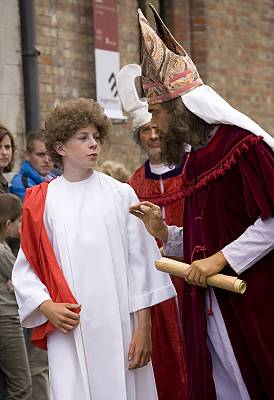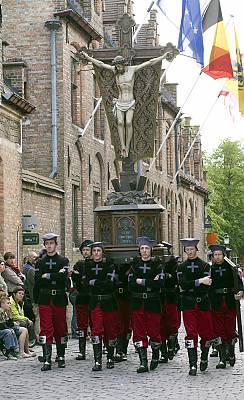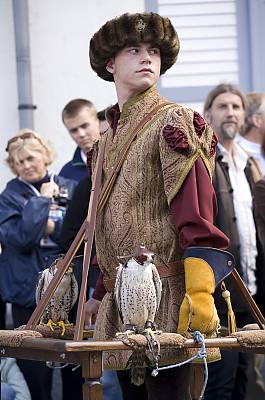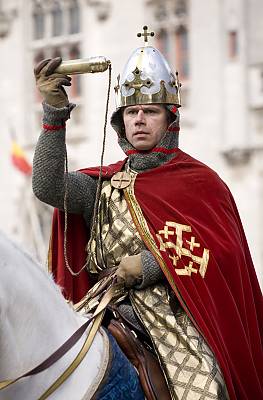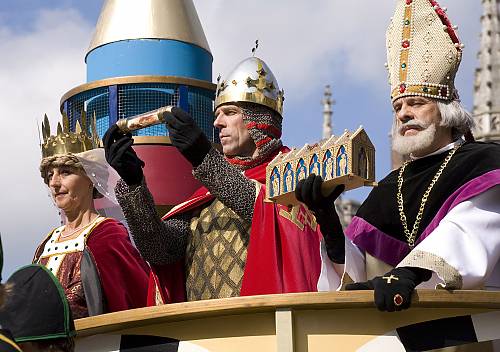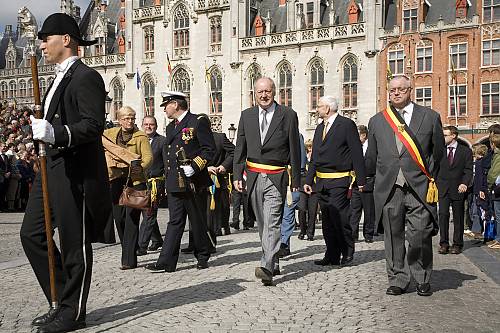Procession of the Holy Blood in Bruges
Inscribed in 2009 (4.COM) on the Representative List of the Intangible Cultural Heritage of Humanity
Country(ies): Belgium
Identification
Description

- Procession of the Holy Blood in Bruges
- © 2007, by Stad Brugge Cel Fotografie
Each spring, 30,000 to 45,000 spectators gather in the heart of the Belgian city of Bruges to watch the Procession of the Holy Blood on Ascension Day, forty days after Easter. The colourful pageant dates back to the thirteenth century, when a citizen of Bruges is said to have brought the Relic of the Holy Blood of Jesus Christ back from the Second Crusade. Led by the thirty city notables of the Brotherhood of the Holy Blood and accompanied by brass bands, more than 1,700 citizens on foot, in carts or on horseback perform stories from the Old Testament, the life of Jesus and the history of Bruges. Then, various civic groups venerate the relic and the procession concludes with a prayer ceremony, performed in several languages to accommodate the international audience. For centuries, the ceremony has played an important role in expressing the identity of Bruges’s inhabitants and in facilitating encounters with people from outside the city. Participants are a representative cross-section of ages, families and communities. Some inhabitants have participated for forty or fifty years, and émigrés often return for ‘Bruges’s Finest Day’. The Procession is a vibrant example of how a collective ceremony can unite a city through ritual enactment of its history and beliefs.
Documents
- Nomination form: English|French
- Consent of communities: French/English
Decision 4.COM 13.04
The Committee (…) decides that [this element] satisfies the criteria for inscription on the Representative List of the Intangible Cultural Heritage of Humanity, as follows:
- R.1: The Procession of the Holy Blood is a ritual and social event of the city of Bruges that has maintained continuity over time and that functions for the citizens as a valued connection to their history and source of their identity, creating pride and reinforcing bonds among the community;
- R.2: Inscription of the procession on the Representative List would strengthen the community’s link to its history and its future, and help raise awareness of the importance of intangible cultural heritage as an expression of human creativity and cultural diversity;
- R.3: The community and local authorities have identified safeguarding measures that include organizing public events, sensitizing youth and promoting the element, while monitoring and evaluating the effects of inscription on the Representative List;
- R.4: The involvement of various community bodies and representatives in the nomination demonstrates their commitment to the safeguarding of this element as an essential part of their cultural identity, and their free, prior and informed consent has been shown through written concurrence;
- R.5: The element is included in an inventory that is maintained by the Arts and Heritage Agency of the Flemish Community.
Slideshow
Video
These videos (and many more) can also be consulted through the UNESCO Archives Multimedia website
















